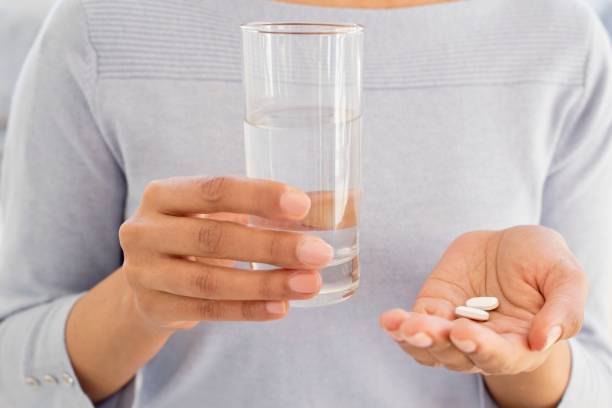Hello everyone!
Over half of people who menstruate experience menstrual pain (dysmenorrhea) for one to a few days every month. Cramps affect many people before and during their period. While some people only experience mild cramps, others aren’t as blessed.
It’s completely normal to feel discomfort around your abdomen, lower back, and thighs when you’re menstruating. During your period, the muscles of your uterus contract and relax to help shed the built-up lining. At times you’ll experience cramps, which are your muscles at work. Some people may also experience nausea, vomiting, headaches, or diarrhoea.
Dealing with cramps every month can be very frustrating. Fortunately, there are remedies that might help you relieve period cramps. It’s important to remember that these methods won’t always work, especially for chronic conditions, but they can offer relief for mild to moderate period pain.
Over-the-counter medication and hormonal birth control are always an option to ease menstrual pain. However, in this article, I would like to focus on a more natural approach.
Drink lots of water
Bloating can cause discomfort and make menstrual cramps worse. Drinking water can reduce bloating. You’re also more likely to have abdominal cramps during your period if you’re dehydrated. Drinking hot water can increase blood flow throughout your body and relax your muscles, as well.
Sip on herbal teas
Herbal teas have anti-inflammatory properties and antispasmodic compounds that can reduce muscle spasms. Drinking chamomile, fennel or ginger tea is an easy way to soothe menstrual cramps.
Avoid coffee and alcohol
Caffeine causes your blood vessels to narrow. This can constrict your uterus, making cramps more painful. You should also stay away from alcohol when you are having cramps.
Eat anti-inflammatory foods
Anti-inflammatory foods can help increase blood flow and relax your uterus. Try eating berries, tomatoes, pineapples and spices like turmeric, ginger or garlic. Leafy green vegetables, almonds and walnuts, can also help reduce inflammation.
Skip unhealthy snacks
Foods high in sugar, trans fat and salt can cause bloating and inflammation; this makes muscle pain and cramps worse.
Try a food supplement
Take a multivitamin/food supplement formulated for women. For best results, take your supplements every day, not just during your period. Also, be sure to ask your doctor before taking any vitamins.
If you’re one of those people who struggles to remember whether they’ve taken their supplements for the day, you can use a pill reminder app to help you keep track of them. This way, you can take the supplements at the same time every day, for the best results. You can use the same app to help you remember other medications as well.
Apply heat
A little heat can help your muscles relax, improve blood flow and relieve tension. Try sitting with a heating pad/hot water bottle, taking a warm shower or relaxing in a bath. Studies show that a heat patch at 40°C (104°F) can be as effective as ibuprofen!
Destress
Stress will make cramps worse. Use stress-relief techniques like meditation, deep breathing, yoga or your favourite way to relieve stress. Try to distract yourself from the pain you are feeling.
Try massaging your abdomen
One study found that massage therapy significantly reduced menstrual pain in women with endometriosis. Massages focused on the abdominal area may reduce uterine spasms by relaxing the uterus. Adding essential oils to your massage may have additional benefits.
Oils that seem to be most effective at reducing period cramps, due to their ability to boost circulation, include:
- lavender
- sage
- rose
- marjoram
- cinnamon
- clove
Exercise
If you are in pain, exercise might be the last thing on your mind. Nonetheless, even gentle exercise releases endorphins that make you feel happy, reduce pain and relax your muscles. Fifteen minutes of light activity or walking might make you feel better. Try moving around if you can.
When should you see a doctor?
Although menstrual pain is fairly common, you will want to see a doctor if:
- Your period cramps are so painful that you can not go about your daily activities.
- The pain does not go away after a couple of days.
- The pain is extreme and paired with excessive bleeding or fever.
- The pain feels suddenly worse than what you experienced previously.
Extreme pain before or during your period can be a sign of a more serious health condition that needs treatment, such as:
- Endometriosis
- Pelvic inflammatory disease (PID)
- Sexually transmitted infections (STIs)
- Uterine fibroids
- Adenomyosis
- Cervical stenosis
Menstrual pain can be a nightmare, but fortunately, there are steps you can take to reduce the pain and discomfort.
Let me know if you are enjoying these health and wellness articles I have been posting lately.
Talk to you soon!
Related posts:
An introduction to aromatherapy




I'm really liking the new health/wellness content. Keep it up!
ReplyDeleteThanks for writing this post!
ReplyDeleteOriginalluxury
Thanks for the tips.
ReplyDelete